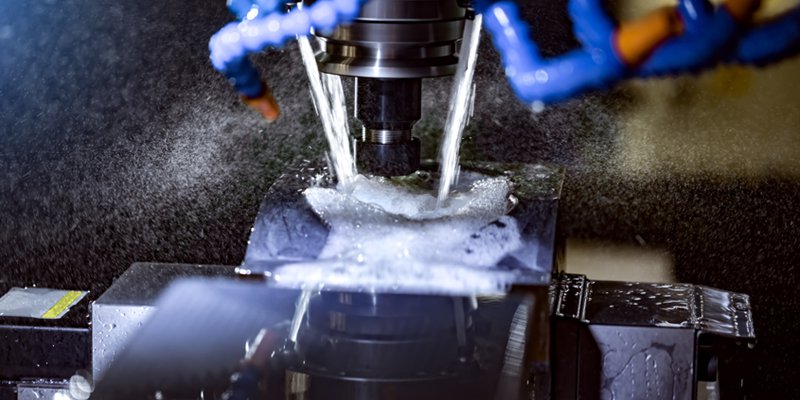- August 4, 2023
Magnesium is a versatile material well-suited for various applications across industries. However, even though you can use magnesium alloys to produce high-quality components with excellent corrosion resistance, magnesium is highly flammable during CNC machining operations.
As a result, it would help to take the necessary precautions to machine the magnesium safely. Implementing due caution in CNC magnesium help to mitigate any safety risk.
Risks of Magnesium Machining
Magnesium alloy machining poses threats that must be managed carefully. You should know some of the risks of CNC magnesium machining.
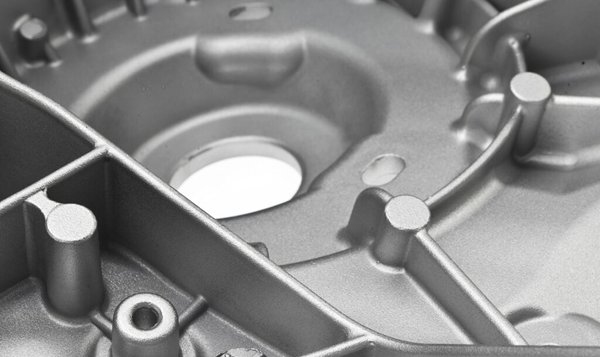
Fire Hazard
The fine chips and dust created when machining magnesium alloys are highly flammable and can cause fire easily. Fire can break out due to excessive heat or small sparks generated during machining.
Tool Wear
Magnesium CNC machining causes faster tool wear than other metal materials due to their relatively soft and abrasive properties. As a result, machining efficiency reduces considerably while tool replacement costs increase.
Heat Generation
Magnesium exhibits poor heat conductivity, producing high heat concentration in the cutting zone. Besides, high cutting temperature causes reduced tool life, workpiece deformation, and tool wear.
Surface Finish Deformation
Magnesium alloys are often open to burr formation and machining-induced deformation. As a result, it becomes difficult to achieve desired high-quality surface finishes without proper machining strategies and tooling selection.
Important Tips for Machining Magnesium Safely
If you take the necessary precautions, CNC precision machining is a versatile process for machining magnesium safely. Below are tips to safely machine magnesium.
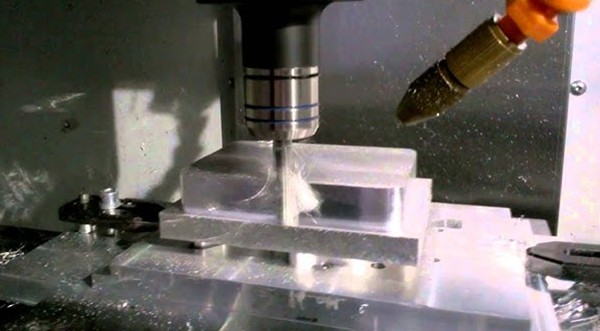
Maintain Proper Tooling Condition
Using sharp cutting tools for your magnesium CNC machining helps mitigate the hazards, as dull tools can cause extreme heat. Consequently, it may ignite the chips from the CNC machining operation.
However, carbide-tipped tools maintain their hardness and are not likely to create sparks when machining magnesium at higher temperatures.
Avoid Tight Clearance Angles
It is advisable to avoid tight clearance angles in magnesium alloy machining, even though you can machine them at higher speeds without compromising the parts’ quality. Machining with tight clearance angles forms longer, unbroken chips, which can easily entangle the rotary cutting tool. Therefore, this can lead to high heat buildup, and the magnesium alloys’ flammability can cause a severe fire hazard.
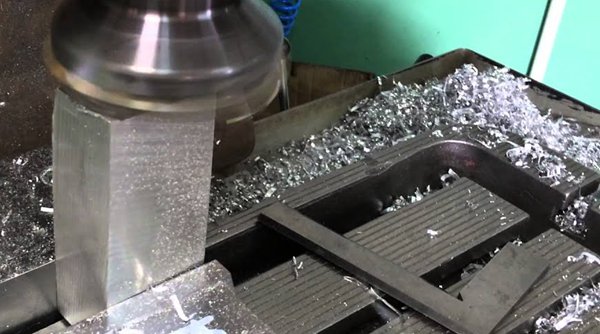
Make Discontinuous Chips
Examine the sizes and types of chips produced during the magnesium CNC machining process. As a general thumb rule, program your CNC machines to make well-broken or discontinuous chips. Discontinuous chips help to efficiently dissipate heat from the cutting tool and workpiece surface, reducing ignition risks.
Program your cutting tool to use a small back rake angle to make well-broken chips. Then, employ low feed rates and moderate to high cutting speed. However, you can also achieve discontinuous chips with large cutting depths.
Avoid Water-Based Coolant
CNC magnesium machining will likely generate excessive heat if your project doesn’t use small back rake angles, low feed rates, or moderate cutting speeds. As a result, you must utilize mineral oil coolants in your machining. These coolants mitigate the fire and explosion risks and enhance the surface quality of the magnesium machined parts.
However, it is not advisable to use water-based coolants in machining magnesium. These water-based coolants may react with magnesium to give highly flammable hydrogen gas.
Use an Explosion-proof Vacuum for Chips
Discontinuous magnesium chips generated during machining remain hazardous even after adhering to the necessary machining parameters for making discontinuous chips. Advanced CNC machine shops now utilize explosion-proof vacuum systems and extractors to remove magnesium chips and dust from the CNC machines safely.
Never Quench Magnesium Fire with Water
Whenever a magnesium-fueled fire accident occurs during machining, it is not advisable to extinguish it with water. It is not an ideal option, as using water will only heighten the severity of the fire outbreak. Therefore, you can use dry, Class-D fire extinguishers to contain the magnesium fire quickly. Likewise, dry sand is an easy alternative if you are trying to extinguish small fires.
Why Choose Magnesium for CNC Machining?
Since there are risks associated with CNC magnesium machining, then why use it? This is a fair question. However, magnesium is ideal for CNC machining if you adhere to the safety guidelines. Magnesium is a lightweight structural metal with a superior surface finish and machinability. There are typical reasons why you should choose magnesium for CNC machining.
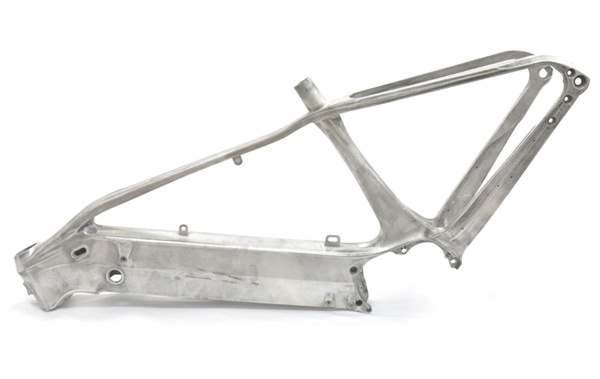
Excellent Machinability
Magnesium machining is much easier to cut and shape with CNC machining processes due to the material’s excellent machinability characteristics. Magnesium alloys have lower cutting forces, which mitigates the rate at which the cutting tool wear.
Complex Geometries
Since magnesium alloys are highly machinable, they are perfect for machining custom parts with complex geometries. Moreover, CNC magnesium machining provides magnesium components with precise and intricate features that meet the stringent requirements of modern engineering projects.
CNC machining gives no room for error in creating magnesium parts with microscopic precision when the process works based on programmed instructions. Besides, the machining center of multi-axis CNC machines features multiple axes capable of machining magnesium alloys from different angles to meet requirements.
Recyclability
It is possible to recycle magnesium material; its alloys are environmentally friendly. As such, magnesium is an ideal material for sustainable manufacturing operations. Likewise, CNC machining procedures generate magnesium waste which can be recycled.
Tool Selection for Magnesium Alloy Machining
Choosing a CNC cutting tool is a critical factor to consider in machining magnesium alloys. It is essential to use sharp tools to avoid excessive heat buildup during machining operations. Below are typical tools used in machining magnesium.
High-Speed Steel Tools
High-speed steel cutters are made of hardened steel alloy, making them ideal for machining applications with less demand and low to moderate manufacturing scales. HSS tools are inexpensive, readily available, and offer the low cutting speed required to cut magnesium materials.
Solid Carbide Tools
Solid carbide end mills, reamers, and drills are widely used magnesium CNC machining tools due to their outstanding resistance to heat and high hardness. These carbide tools have remarkable resistance to wear and handle heat well, making them perfect for demanding machining applications of magnesium alloys.
Coated Carbide Tools
Cutting tools with specialized coatings like titanium aluminum nitride (TiAlN) or titanium nitride (TiN). The thin coating layer on these tools enhances their resistance to wear, mitigating the formation of built-up edges when machining magnesium.
In addition, these coated tools exhibit impressive thermal stability, allowing them to perform well despite the high temperature produced during magnesium machining.
Polycrystalline Diamond Tools
These tools provide excellent wear resistance and are ideal for machining high-quality surface finishes in magnesium-machined parts. Machinists often use these tools for machining magnesium alloys because they are effective in machining hard materials or magnesium alloys that are highly abrasive.
Various CNC Machining Methods for Magnesium
CNC machining methods effectively cut magnesium to create various parts for different applications.
CNC Drilling
CNC drilling is a versatile method for making holes in the magnesium workpiece using rotating cutters or drill bits. Most applications require precise drilling, and CNC machines offer the high accuracy needed in making intricate hole patterns.
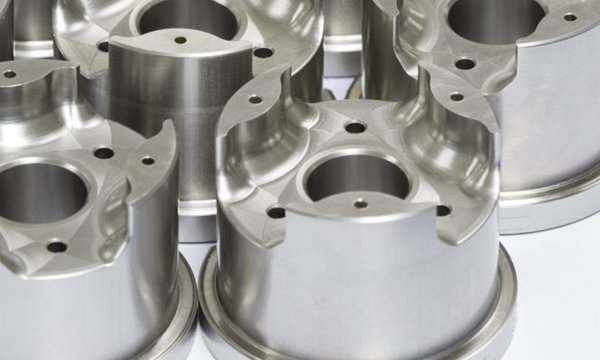
CNC Milling
CNC milling is one of the popular CNC machining techniques used for magnesium material. The method uses a rotating tool cutter to create a preferred shape in milling magnesium. CNC milling is highly effective and well-suited for machining simple and intricate geometries.
CNC Turning
The CNC turning method involves cutting material from a rotating magnesium alloy material held in a chuck. This method is perfect for machining cylindrical shapes like pins, shafts, and threaded parts.
Laser Cutting
This is another common CNC magnesium machining method. It uses high-powered lasers to deliver precise cuts on magnesium sheets or plates. Laser cutting is ideal for creating thin and complex parts quickly and efficiently.
Tapping
Tapping is reliable method machinists use to make internal threads in machined magnesium components. CNC machining helps to automate this method. Thus, you can achieve accurate thread dimensions and pitch.
No Worries to Get Your Magnesium Machined Parts at WayKen
WayKen is a reliable CNC machining services provider with vast experience in custom machining solutions. Our engineers have over 10 years of experience machining magnesium alloys, titanium, aluminum, and other metal and plastic materials which helps us to meet your specific project needs. Just upload your files to get a free quote today!
Conclusion
Machining magnesium offers lightweight components with great strength, impact resistance, and good dimensional stability. However, there are several magnesium CNC machining processes for making several parts for various applications.
Although magnesium has excellent machinability properties and CNC machining is highly versatile, there are inherent hazards associated with machining magnesium. Thus, it would help to understand how to machine magnesium alloys to ensure safety during machining operations.
FAQs
Which magnesium alloy is the best for machining?
The best magnesium alloys commonly used in machining are AZ91 and AZ31. However, AZ91 exhibits a greater Knoop’s hardness (HK) of 76.2, while AZ31 offers 51.1 HK.
What are the disadvantages of machining magnesium alloy?
Regardless of the extensive benefits magnesium machining offers, its relatively limited availability, poor corrosion resistance, and lower density are significant constraints.
What are the common uses of magnesium?
Magnesium alloys are versatile materials commonly used to make lightweight components such as casings for cameras, medical devices, and electronics like phones and laptops. Additionally, magnesium alloys are used in making certain high-performance vehicles.
Can I weld magnesium?
You can easily weld magnesium alloys using the arc and resistance welding methods and oxyfuel gas welding technique.

